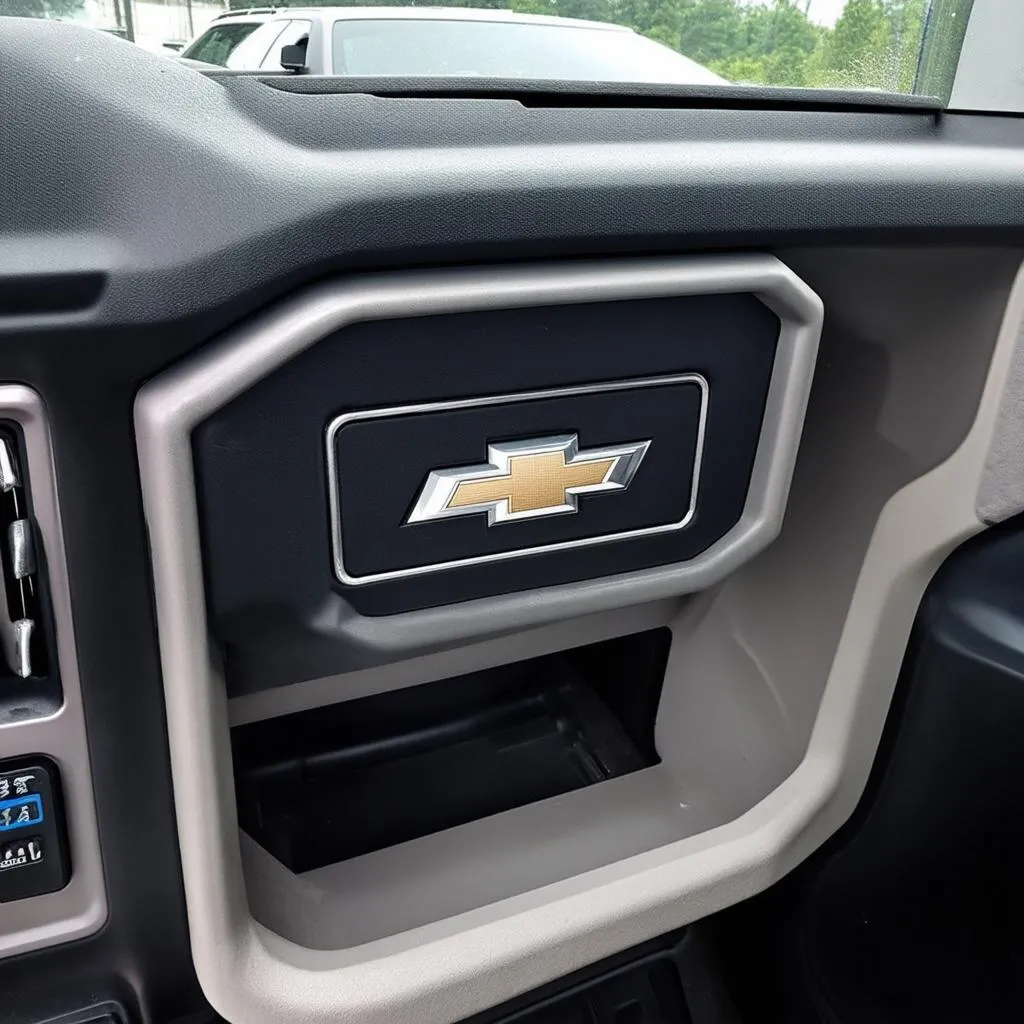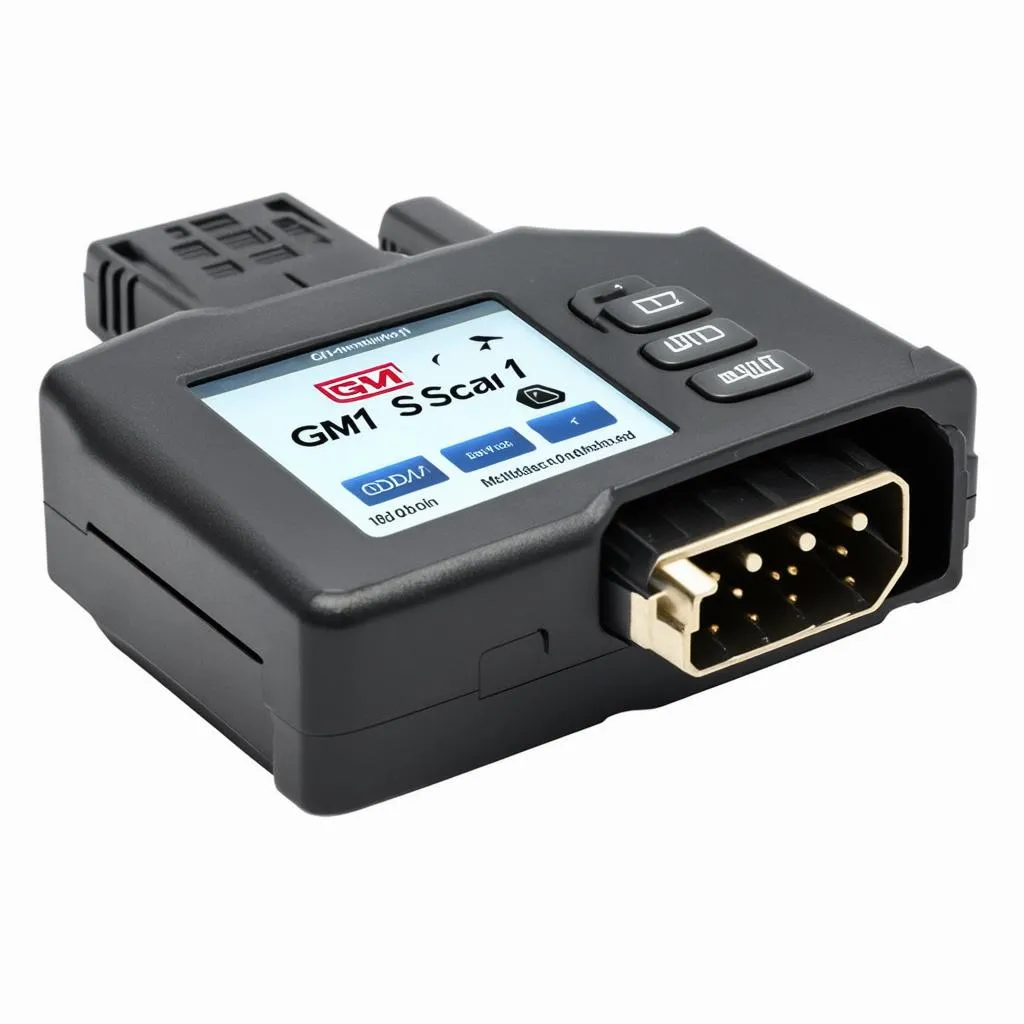“If your truck’s older than the internet, you need a special connection” – Old Mechanic Wisdom. That’s where the Cheyenne 1500 Obd 9-pin comes in. Before we had sleek OBD2 ports spitting out engine codes, there was this unique system found on many 1995 and earlier Chevrolet (and GMC) trucks, including our beloved Cheyenne 1500. Today, we’ll unravel the mystery of this connector, diving deep into what it is, how to use it, and why it matters even in our modern world.
Understanding the 9-Pin Connector: A Blast from the Past
The 9-pin connector under your Cheyenne 1500’s dash isn’t just some random plug. It’s the gateway to your truck’s early On-Board Diagnostics (OBD) system, specifically OBD1. Imagine it as the original “check engine” light system, albeit a bit more rudimentary than what we’re used to today. Back then, instead of a universal 16-pin connector, manufacturers like GM had their own protocols and connectors.
What it Does (And Doesn’t Do)
This 9-pin system was primarily designed to monitor emissions-related components. Think of it as your truck’s early attempt to stay environmentally conscious. It could detect issues with:
- Fuel delivery: A rich or lean fuel mixture could point to problems with the fuel injectors, oxygen sensor, or even a vacuum leak.
- Ignition system: Misfires due to faulty spark plugs, wires, or distributor components could be flagged.
- Emissions control: Problems with the EGR (Exhaust Gas Recirculation) valve or other emissions-related components could trigger codes.
However, don’t expect the level of detail you’d get from a modern OBD2 scanner. The 9-pin system was limited in its diagnostic capabilities and often only provided rudimentary codes that pointed you in the general direction of the problem.
Why You Should Care
“Knowing your enemy is half the battle,” or in this case, knowing your truck is half the battle against unexpected breakdowns. Even though it’s an older system, understanding your Cheyenne 1500’s 9-pin OBD can still be beneficial. Here’s why:
- Troubleshooting: Even basic codes can provide valuable clues when diagnosing issues.
- Cost Savings: Early detection of potential problems can save you big bucks on costly repairs down the road.
- DIY Pride: There’s a certain satisfaction that comes with understanding and working on your own vehicle, even if it’s an older model.
Using the Cheyenne 1500 Obd 9-pin
Now, how do you actually communicate with this ancient portal of automotive knowledge? You’ll need a special tool: a GM OBD1 scanner.
Choosing the Right Scanner
You have a couple of options:
- Dedicated GM OBD1 Scanner: These scanners are specifically designed for GM vehicles with the 9-pin connector. They offer the most straightforward approach.
- Adapter with a Modern OBD2 Scanner: You can purchase an adapter that converts the 9-pin connector to the standard OBD2 port. This allows you to use a modern OBD2 scanner, which often has more features and can be used with other vehicles.
Reading and Interpreting Codes
Once you have your scanner:
- Locate the Diagnostic Port: The 9-pin connector is typically located under the dashboard, on the driver’s side.
- Connect the Scanner: Plug the scanner or adapter into the diagnostic port.
- Turn the Ignition On: Turn the key to the “On” position but don’t start the engine.
- Retrieve Codes: Follow the instructions on your specific scanner to retrieve the trouble codes.
Interpreting the codes can be a bit tricky, as they are often presented as two-digit numeric codes. Refer to your scanner’s manual or consult online resources specific to GM OBD1 codes to decipher what each code means.
Beyond Code Reading: Advanced Functions
Some scanners (or adapters used with modern scanners) offer additional functions, such as:
- Live Data: Viewing live sensor data can provide more in-depth insights into your engine’s performance.
- Actuator Tests: This allows you to command various components, such as fuel injectors or the EGR valve, to test their functionality.
- Clearing Codes: Once you’ve addressed an issue, you can use the scanner to clear the codes.
A Word of Caution: Don’t Rely Solely on Technology
While diagnostic tools are incredibly helpful, it’s essential to remember that they are just tools. They can provide clues and point you in the right direction, but they shouldn’t be a substitute for proper mechanical diagnosis.
If you encounter persistent issues with your Cheyenne 1500, consult a qualified mechanic who has experience with older GM vehicles. They have the knowledge and expertise to properly diagnose and repair any problems.
Embracing the Legacy
The Cheyenne 1500’s 9-pin OBD system is a reminder of how far automotive technology has come. While it may seem archaic compared to today’s sophisticated systems, understanding it can empower you to maintain and enjoy your classic truck.
 Chevy 1500 OBD Port Location
Chevy 1500 OBD Port Location
 GM OBD1 Scanner
GM OBD1 Scanner
Have More Questions About Your Classic Chevy Truck?
We’re here to help! Feel free to leave a comment below, or for personalized assistance with your vehicle’s diagnostics, contact our team of automotive experts via Whatsapp at +84767531508. We’re available 24/7 to provide support and guidance.
And don’t forget to check out our other articles for more insights into maintaining and repairing your classic Chevrolet and GMC trucks:
- Cheyenne 1500 OBD 9-Pin: OBD1 Explained
- [Common Issues with the Cheyenne 1500’s Electrical System]
- [DIY Maintenance Tips for Your Classic Chevy Truck]